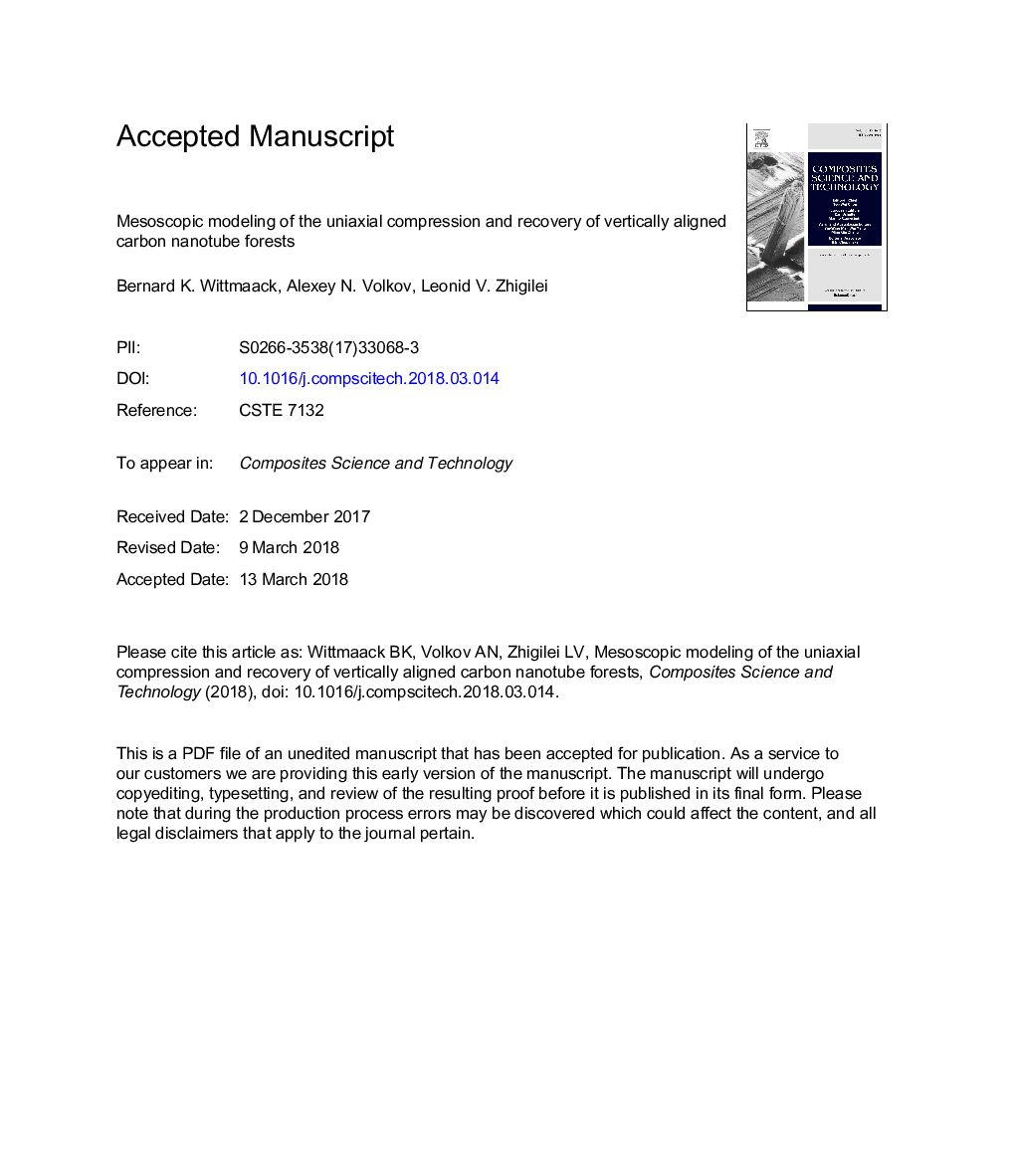| Article ID | Journal | Published Year | Pages | File Type |
|---|---|---|---|---|
| 10226554 | Composites Science and Technology | 2018 | 49 Pages |
Abstract
Vertically aligned carbon nanotube (VACNT) arrays or “forests” represent a promising class of mechanically strong and resilient lightweight materials, capable of supporting large reversible deformation and absorbing mechanical energy. The mechanical response of VACNT forests to uniaxial compression is defined by various factors, including the material microstructure, its density, height, rate of deformation, and the nature of interaction between carbon nanotubes (CNTs) and the compressing indenter. In this paper, we use a coarse-grained mesoscopic model to simulate the uniaxial compression of VACNT samples with different densities and microstructures (bundle size distribution and degree of nanotube alignment) to obtain a clear microscopic picture of the structural changes in networks of interconnected CNT bundles undergoing mechanical deformation. The key factors responsible for the coordinated buckling of CNTs, reversible and irreversible modes of deformation in VACNT arrays undergoing uniaxial compression, as well as hysteresis behavior in VACNT arrays subjected to five loading-unloading cycles are investigated in the simulations. The simulation results reveal the important role of the collective buckling of CNTs across bundle cross-sections as well as a complex deformation behavior of VACNT arrays defined by an interplay of different modes of bundle deformation. The loading rate and the CNT attachment to the indenter are found to have a strong effect on the deformation mechanisms and the overall mechanical behavior of VACNT forests. A good agreement with experimental data from in situ mechanical tests is observed for the general trends and magnitudes of loss coefficients predicted in the simulations. The forest morphology can strongly alter the mechanical behavior of VACNT arrays with nominally the same general characteristics, such as CNT radius, length, and material density, thus suggesting the opportunity for substantial enhancement of the mechanical properties through the microstructure modification.
Related Topics
Physical Sciences and Engineering
Engineering
Engineering (General)
Authors
Bernard K. Wittmaack, Alexey N. Volkov, Leonid V. Zhigilei,
